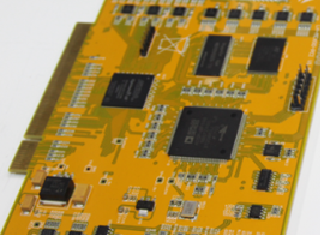Several Precautions for EMC Testing of Microcontroller Systems
Time:2024-02-06
Views:228
EMC refers to the ability of a device or system to operate in its electromagnetic environment in compliance with requirements without causing intolerable electromagnetic interference to any device in its environment. Therefore, EMC includes two requirements: on the one hand, it means that the electromagnetic interference generated by the equipment to the environment during normal operation cannot exceed a certain limit; On the other hand, it refers to the equipment having a certain degree of immunity to electromagnetic interference present in the environment, that is, electromagnetic sensitivity.


For engineering and technical personnel engaged in the design of microcontroller application systems, it is necessary to master certain EMC testing techniques. Below, the author introduces several precautions for EMC testing of microcontroller systems.
(1) Test environment
In order to ensure the accuracy and reliability of test results, electromagnetic compatibility measurement has high requirements for the testing environment, with measurement sites such as outdoor open areas, shielding rooms, or radio anechoic rooms.
(2) Testing equipment
Electromagnetic compatibility measurement equipment can be divided into two categories: one is electromagnetic interference measurement equipment, which can measure electromagnetic interference by connecting appropriate sensors to the equipment; Another type is in electromagnetic sensitivity measurement, where the device simulates different interference sources and applies them to various tested devices through appropriate coupling/decoupling networks, sensors or antennas for sensitivity or interference measurement.
(3) Measurement method
There are many measurement methods for electromagnetic compatibility testing based on different standards, but they can be classified into four categories; Conducted emission test, radiated emission test, conducted sensitivity (immunity) test, and radiated sensitivity (immunity) test.
(4) Test diagnostic steps
(5) Test preparation
① Test site conditions: The EMC testing laboratory consists of a semi anechoic room and a shielded room. The former is used for radiation emission and radiation sensitivity testing, while the latter is used for conducted emission and conducted sensitivity testing.
② Environmental level requirements: It is recommended that the electromagnetic environmental level of conduction and radiation be far below the limit value specified in the standard, and generally the environmental level should be at least 6dB below the limit value.
③ Test table.
④ Isolation between measuring equipment and tested equipment.
⑤ Sensitivity discrimination criterion: Generally provided by the tested party, and monitored and judged truthfully to determine the degree of performance degradation through measurement and observation.
⑥ The placement of the tested equipment: To ensure the repeatability of the experiment, there are usually specific regulations for the placement of the tested equipment.
(6) Test type
Conducted emission test, radiated emission test, conducted immunity test, radiated immunity test.
(7) Common measuring instruments
Electromagnetic interference (EMI) and electromagnetic sensitivity (EMS) testing require the use of many electronic instruments, such as spectrum analyzers, electromagnetic interference measuring instruments, signal sources, functional amplifiers, oscilloscopes, etc. Due to the wide frequency (20Hz~40GHz) and large amplitude of EMC testing( μ It is very important to use electronic instruments correctly, as there are many modes (FM, AM, etc.) and postures (flat, inclined, etc.) from V to kW. A suitable instrument for measuring electromagnetic interference is a spectrum analyzer. A spectrum analyzer is an instrument that displays the pattern of voltage amplitude changing with frequency, and the waveform it displays is called the spectrum. The spectrum analyzer overcomes the shortcomings of oscilloscopes in measuring electromagnetic interference and can accurately measure the interference intensity at various frequencies. The spectrum analyzer can directly display the various spectral components of the signal.
Identifying the source of interference is the first step
The most important issue in solving electromagnetic interference problems is to determine the source of interference. Only after accurately locating the interference source can measures to solve the interference be proposed. The simplest method to determine the source of interference is based on the frequency of the signal, because among all the characteristics of the signal, the frequency characteristic is the most stable, and circuit designers often have a clear understanding of the signal frequency in various parts of the circuit. Therefore, as long as the frequency of the interference signal is known, it can be inferred where the interference is generated.
For electromagnetic interference signals, as their amplitude is often much smaller than normal working signals, using a spectrum analyzer for this measurement is very simple. Due to the narrow mid frequency bandwidth of the spectrum analyzer, it can filter out signals with frequencies different from the interference signal, accurately measure the frequency of the interference signal, and thus determine the circuit that produces the interference signal
|
Disclaimer: This article is transferred from other platforms and does not represent the views and positions of this site. If there is any infringement or objection, please contact us to delete it. thank you! |











